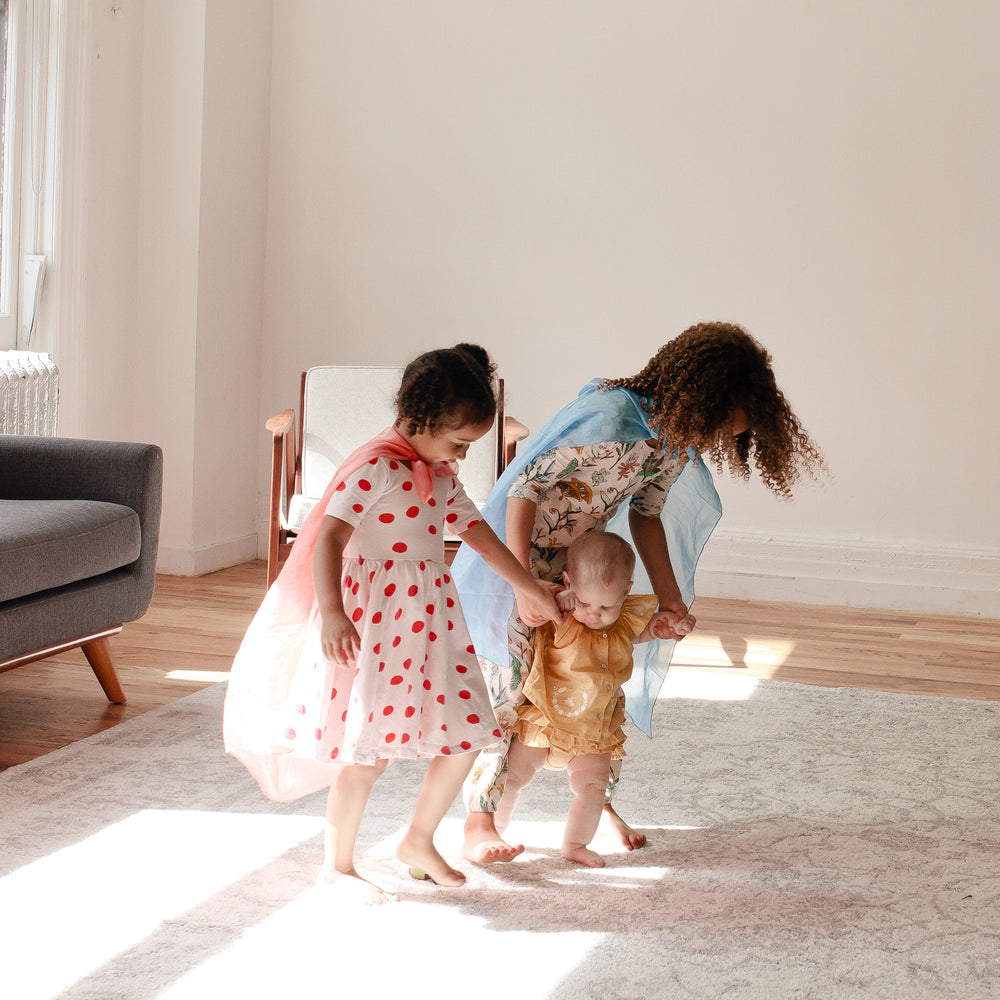5 Ways to Extend Your Child’s Play


In my preschooler-ruled universe, big chunks of “deep grown-up work time” are few and far between. That’s why I’m so passionate about helping my daughter extend her play. By offering support at a few key points during play sessions, I can help Sasha set up “games” that captivate her independent interest for longer periods of time. I can also introduce opportunities to explore literacy, numeracy, gratitude, and flexibility through play -- things that matter to me and will enrich my kiddo’s head, heart, and hands. Here are five ways that parents (and children!) can practice extending play.
WHEN PLAY IS STARTING
Agree enthusiastically
Get that play off the ground! When your kiddo introduces a new idea, YES that brilliance so your kiddo feels empowered to put theory into action. If the initial play inspiration is your idea, rather than your kiddo’s, you’ve got to sell it even harder. Total buy-in propels play forward and sets it on the path towards long-running enjoyment.
Suggest signage
Look for opportunities to create letter- and number-rich print with your child. For example, if you’ve agreed to create an obstacle course, you can draw a map, design a scoreboard, or craft a title sign. If there’s a store in your game, you can make price tags, print money, or write receipts. The signage becomes a new “toy” -- always novel -- and enriches the reality of your play world.
I’ll admit, sometimes my three-year-old, Sasha, is too absorbed in playing to join in my scribing. And that is perfectly okay. I like that Sasha can see how I hold a crayon, form letters and numbers, and cherish language and math. I always invite her to help gather the writing materials, and often confer with her on what color to use.
WHEN PLAY IS GROOVING
Level up
When kiddos are enjoying their play, I recommend grown-ups stay out of their way! Play provides kiddos with opportunities to explore power and exercise control. It’s in our collective best interest for our kiddos to call the shots during play; this experience enriches their leadership skills in the long-run and, in the short-run, reduces their hunger to call the shots during parent-led transitions, like bedtime. Of course, there’s some nuance. If you notice that your kiddo struggles with flexibility when it’s time to collaborate, you may need to model compromise.Otherwise, I say sit back and let your kiddos direct and transform the play according to their deep needs and delicious creativity. It gives you the gift of getting to marvel at your beloved child and having some time to yourself!
If you sense that your child would appreciate a challenge, or if you want to co-play but find yourself bored, you can introduce a twist -- say, another stunt in the obstacle course or a new product at the store. This can breathe new life into a game that might otherwise have gone stale.
WHEN PLAY IS WANING
Teach out
Before a play session has totally sputtered out, you can resuscitate it by asking your kiddo to onboard a real or imagined playmate. Modeling for a sibling, orienting a grown-up, or teaching a stuffed animal can help your kiddo’s chest puff out with pride for two reasons. First, she gets to take on the role of expert and teach a newcomer the rules of her game. Second, she gets to correct missteps and/or receive praise for her play ideas. The combination of new blood + confidence-building interactions is likely to get your kiddo back into the game. As an additional bonus, this training exercise also might help her practice perspective-taking!
Jump the shark
This is the ultimate last-ditch effort to win back your kiddo’s attention. Simply get goofy -- say, go through the obstacle course with floppy arms and wobbly legs or make like a kangaroo and bounce into the store. This strategy isn’t surefire -- your silly idea could totally up-end the play and transform it into a new, boisterous, parent-led game. But that isn’t necessarily a bad thing. High-octane play could be just the ticket for exhausting your kiddo and shifting into a period of quiet play with books, puzzles, or blocks from which you could exit into the world of work. Regardless, embracing full-bodied silliness is a great stress reliever and tends to delight one and all -- a win in my book.
Hope this helps your kiddo break the cycle of flitting from activity to activity and lets you enjoy some grown-up time. Keep calm and play on!
Recent Articles
-
Playful Primer 10 Must-Have Toys for Your Next Backyard BBQ
Summer is just around the corner and we're ready for it! From backyard BBQs to neighborhood park outings, we've discovered...
read more -
Playful Primer Tips & Toys to Support Group Play Experiences
Catching a glimpse of children happily engaged in pretend play is like witnessing pure magic. Ever wonder how closely you...
read more -
Playful Primer 5 Ways to Strengthen the Bond Between Siblings
“I’ll take care of the bike. You take care of each other.” This is what I said to my children...
read more
